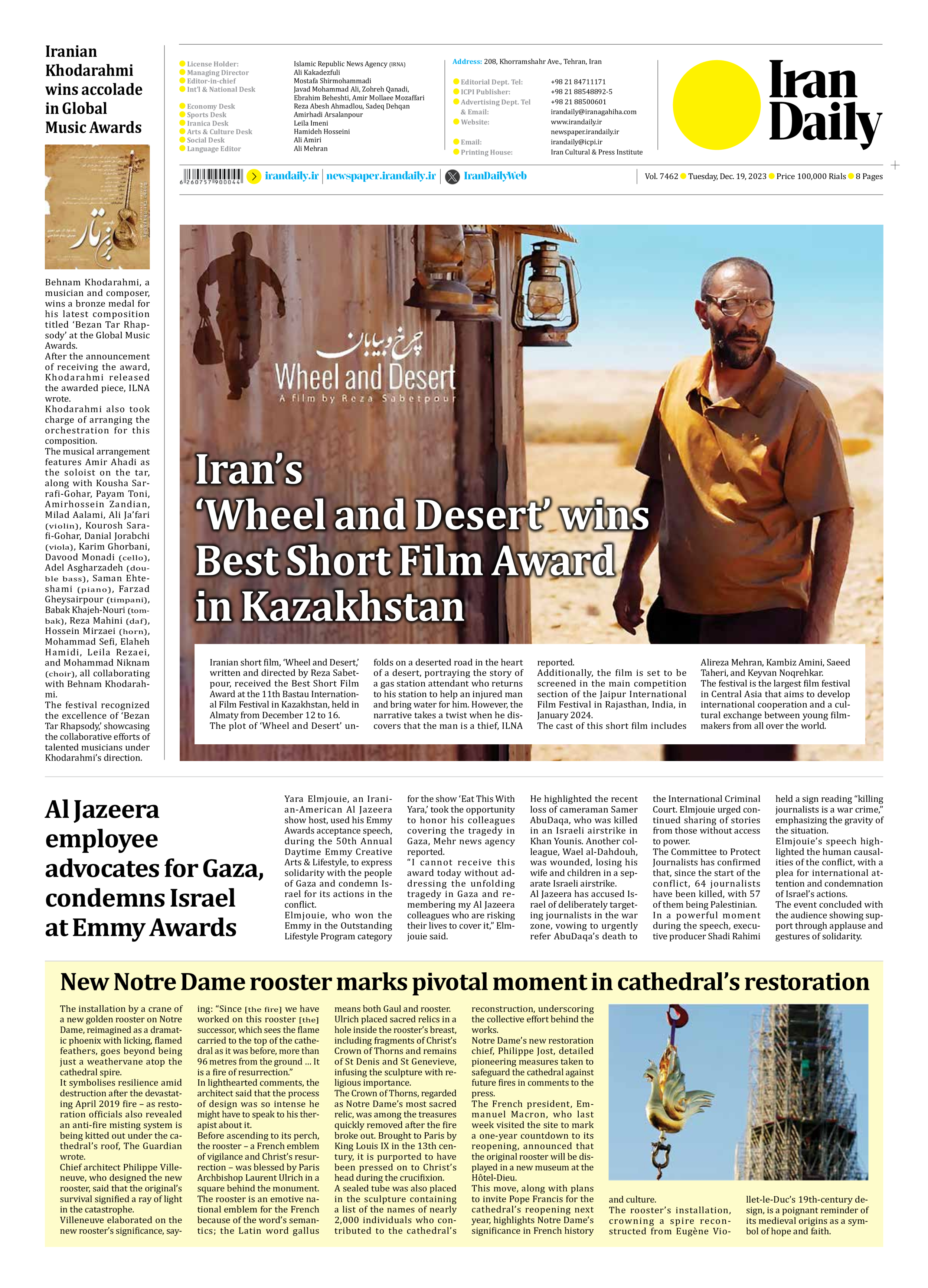
New Notre Dame rooster marks pivotal moment in cathedral’s restoration
The installation by a crane of a new golden rooster on Notre Dame, reimagined as a dramatic phoenix with licking, flamed feathers, goes beyond being just a weathervane atop the cathedral spire.
It symbolises resilience amid destruction after the devastating April 2019 fire – as restoration officials also revealed an anti-fire misting system is being kitted out under the cathedral’s roof, The Guardian wrote.
Chief architect Philippe Villeneuve, who designed the new rooster, said that the original’s survival signified a ray of light in the catastrophe.
Villeneuve elaborated on the new rooster’s significance, saying: “Since [the fire] we have worked on this rooster [the] successor, which sees the flame carried to the top of the cathedral as it was before, more than 96 metres from the ground … It is a fire of resurrection.”
In lighthearted comments, the architect said that the process of design was so intense he might have to speak to his therapist about it.
Before ascending to its perch, the rooster – a French emblem of vigilance and Christ’s resurrection – was blessed by Paris Archbishop Laurent Ulrich in a square behind the monument. The rooster is an emotive national emblem for the French because of the word’s semantics; the Latin word gallus means both Gaul and rooster.
Ulrich placed sacred relics in a hole inside the rooster’s breast, including fragments of Christ’s Crown of Thorns and remains of St Denis and St Genevieve, infusing the sculpture with religious importance.
The Crown of Thorns, regarded as Notre Dame’s most sacred relic, was among the treasures quickly removed after the fire broke out. Brought to Paris by King Louis IX in the 13th century, it is purported to have been pressed on to Christ’s head during the crucifixion.
A sealed tube was also placed in the sculpture containing a list of the names of nearly 2,000 individuals who contributed to the cathedral’s reconstruction, underscoring the collective effort behind the works.
Notre Dame’s new restoration chief, Philippe Jost, detailed pioneering measures taken to safeguard the cathedral against future fires in comments to the press.
The French president, Emmanuel Macron, who last week visited the site to mark a one-year countdown to its reopening, announced that the original rooster will be displayed in a new museum at the Hôtel-Dieu.
This move, along with plans to invite Pope Francis for the cathedral’s reopening next year, highlights Notre Dame’s significance in French history and culture.
The rooster’s installation, crowning a spire reconstructed from Eugène Viollet-le-Duc’s 19th-century design, is a poignant reminder of its medieval origins as a symbol of hope and faith.







